Using the data compiled from the PE360 thermal testing I have compiled the following tables in an attempt to show another way how the PE performance varies against itself at the flow rates and fan speeds tested. First let’s take a look at the raw numbers:
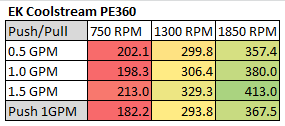 We can use these to show percentage gains relative to a reference point. It’s an interesting way to show gains/losses while changing a variable. This first table shows performance gain or loss relative to 1.0GPM flow rate:
We can use these to show percentage gains relative to a reference point. It’s an interesting way to show gains/losses while changing a variable. This first table shows performance gain or loss relative to 1.0GPM flow rate:
This shows that increasing flow to 1.5GPM had a little gain while lowering flow to 0.5GPM only affects the higher airflow case.
We can also focus on 1300RPM as our reference and see how much gain or loss in performance we get by changing fan speed:
As expected the change is dramatic. Lastly we can combine both and choose 1300 RPM and 1.0 GPM as our reference point to show both effects concurrently:
So from the data above we can get a very good idea of how the PE360 radiator performs relative to itself. But there is a large selection of 360mm radiator models to choose from, released from numerous manufacturers. So, we need to start comparing performance between them. To see how the radiator performed against the other radiators in this group I have included the averaged flow rate comparison charts from the Round Up. We know that the flow rate has little impact on thermal performance so averaging of the 3 flow rate results gives us a good look at head to head performance at the rpm speeds tested at with even less error.
Let’s start off with the Push only data:
At 750RPM the PE does very respectably for a slimmish radiator. The slimmer GTS however steals it’s thunder by doing better still.
At 1300RPM the higher FPI of the PE now leads the slimmer radiators and overtakes the GTS.
At 1850RPM the PE still does well for it’s thickness, however the thicker alternatives are now performing better.
Now let’s take a look at Push/Pull – we already know to expect this to be worse:
At 750RPM however the PE is still doing well.
At 1300RPM the thin core is suffering compared to the thicker competition.
This continues at 1850RPM, however if we were to exclude thicker radiators, then the PE would actually be doing very well.
By using only the 1GPM data we can compare Push to Push/Pull in an apples to apples sense. The downside is that the plots are large and confusing:
At 750RPM the slim PE radiator with push fans was already beating a push/pull radiator setup. Impressive for a small package.
At 1300 RPM the PE in push starts get overtaken by it’s stablemate the XE in push. The PE in push though it still fighting strong and outperforming many other radiators including even more push/pull setups now.
At 1850RPM the PE now looks comparatively much worse. It’s slim core just can’t keep up with the thicker competition.
From all of these results we can create a “master performance factor”. The radiator with the best cooling ability (W/10ΔT) at each gpm/rpm combo was awarded a score of 100, and each other radiators W/10ΔT result was scored as percentage of the top performer:
Here we see that the Performance of the PE360 drops off (comparatively) as the fan speed is increased.
Then all these percentage scores were averaged giving us the Averaged Performance Factor of each radiator. This way of looking at the comparison takes away any advantages that a radiator may have at higher or lower fan speeds and looks at an overall average. While this appears fair it does tend to favor those radiators that are all rounders and those radiators which do very well at high RPM. Most users should be more focused on their specific use case. Check in the Round Up for performance comparisons at every gpm/rpm combo for even more details and cross comparison results.
Again let’s start with Push only first:
The PE hits a score of 90.6. This is very impressive for a radiator with such a small package. Sadly for EK the HWLabs GTS is slimmer and outperforms it still.
In Push/Pull the PE drops 5% to 85.7. This is still respectable. Even in this configuration the PE is performing solidly in the middle of the pack.
The PE360 didn’t place highly in the “Average Performance Factor” calculations, but it was never expected to. It’s a medium thickness radiator with a thin core and it’s performance cannot be expected to be on par with the thicker core radiators with potential for much higher heat dissipation. Where space is concerned therefore, while deep internal shrouds may help increase fan and radiator efficiency, performance is better with a thicker core.
Next up – Summary!








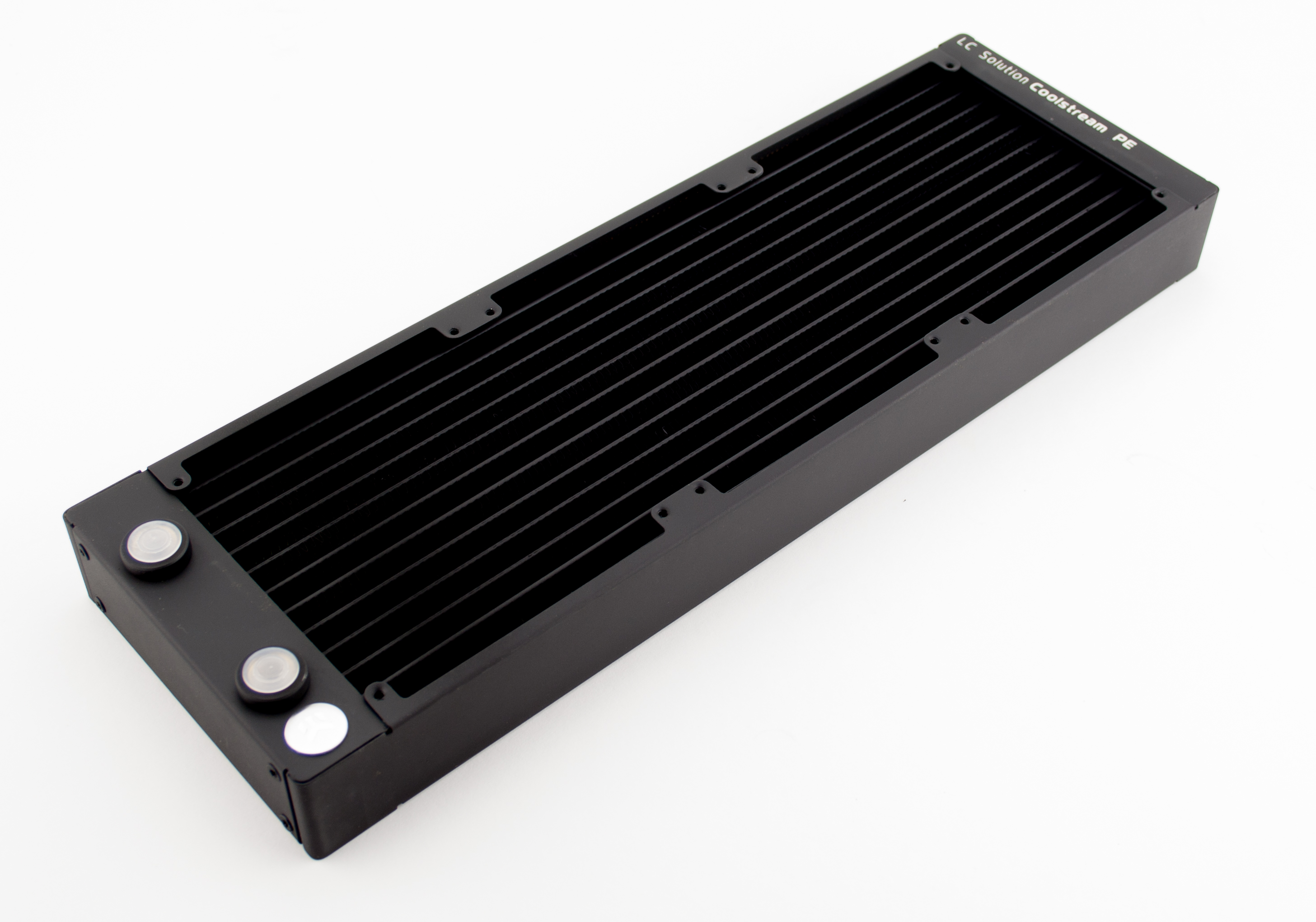
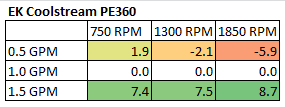
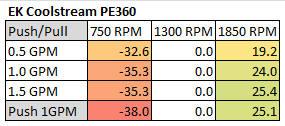
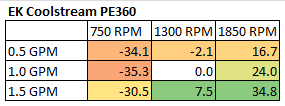
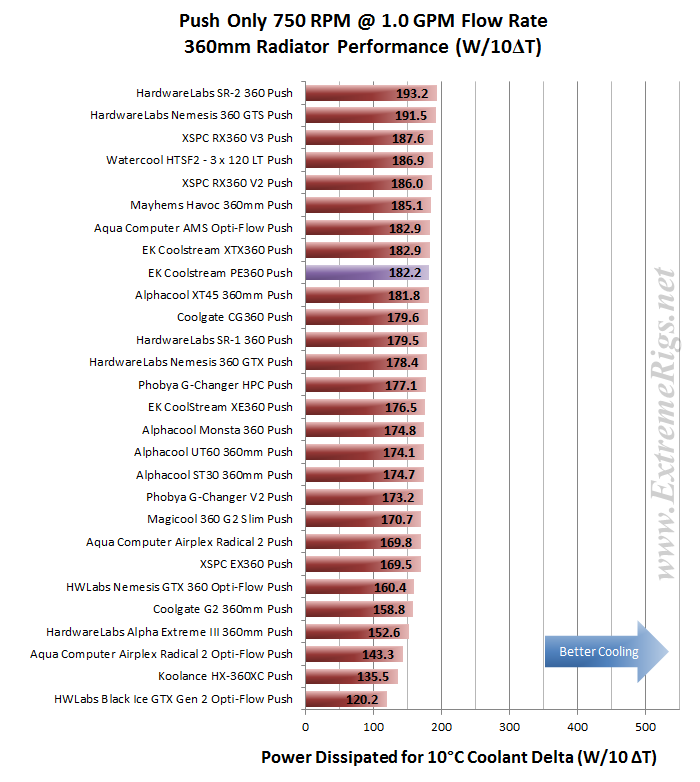
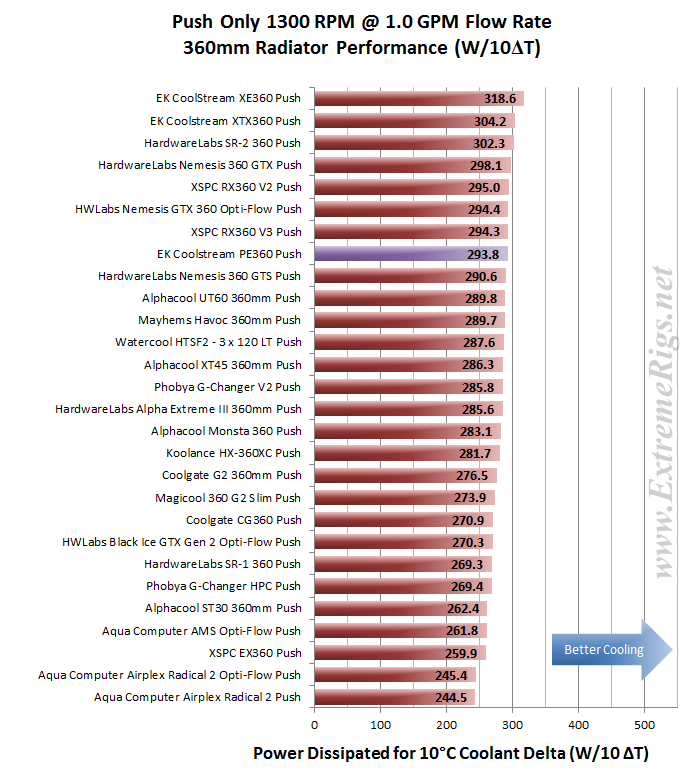
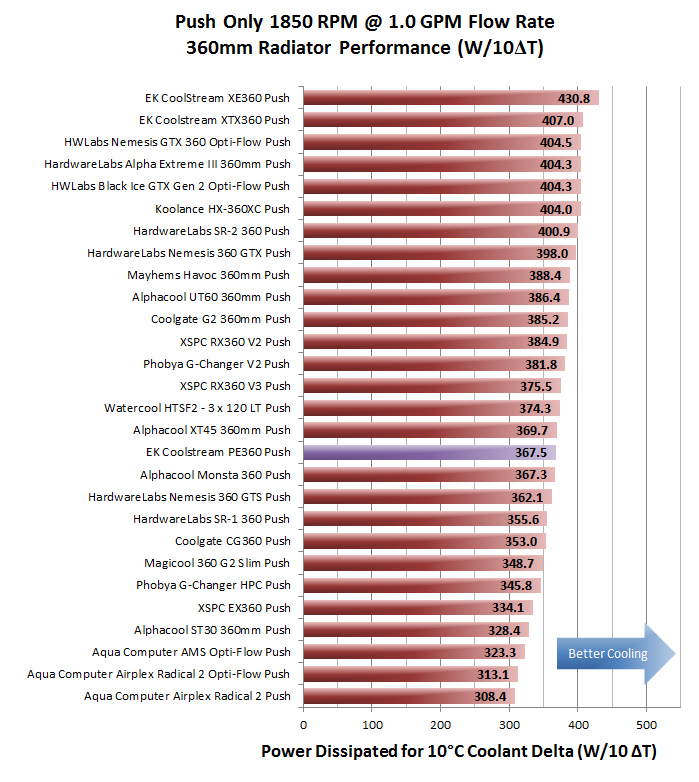
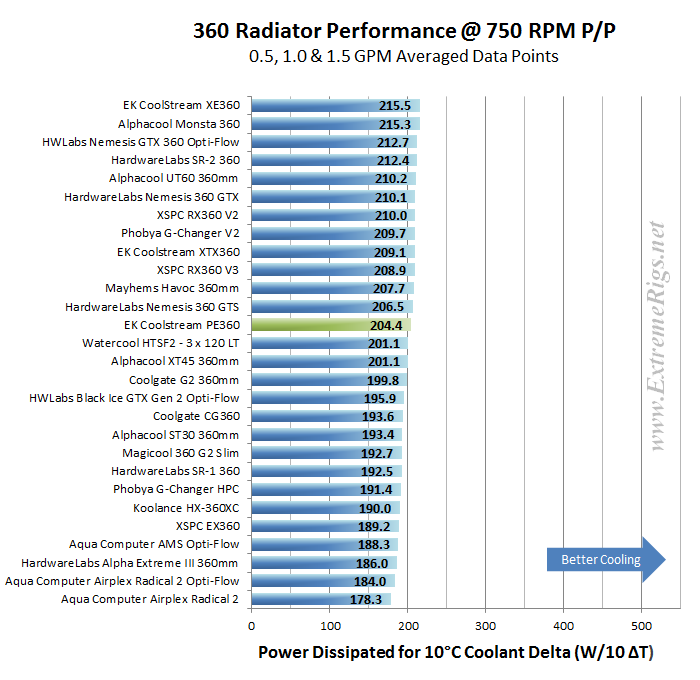
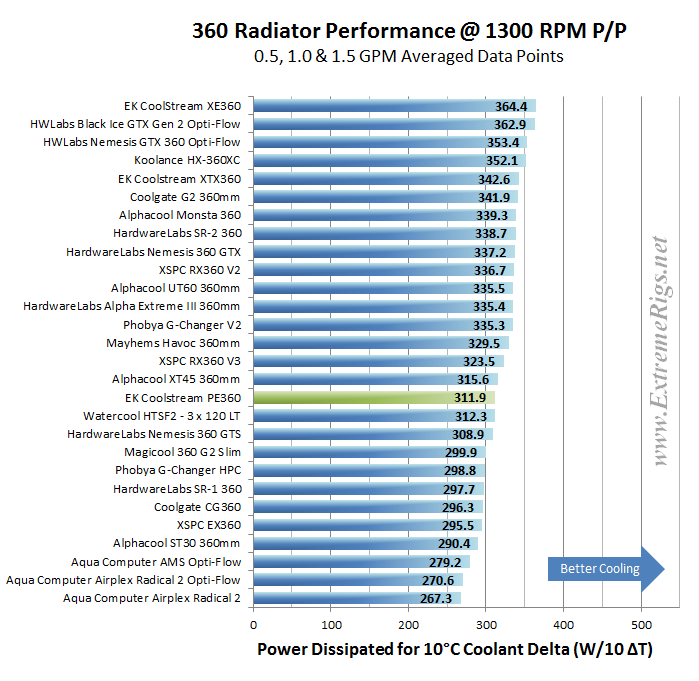
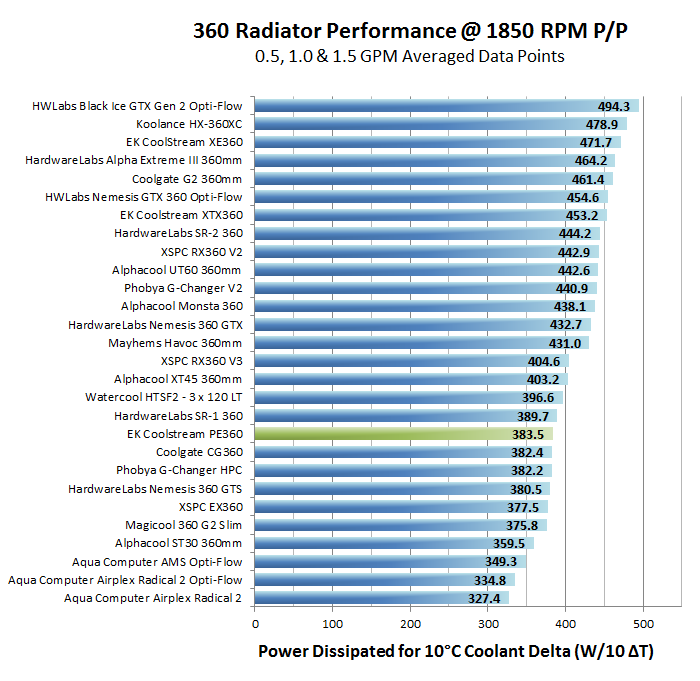
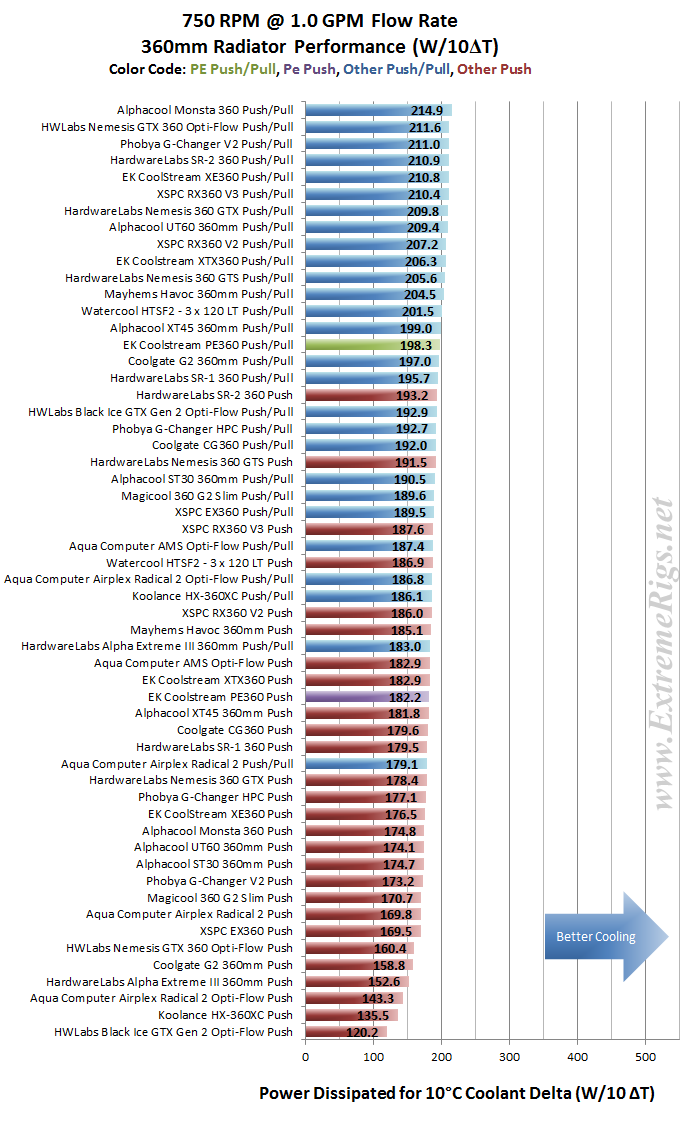
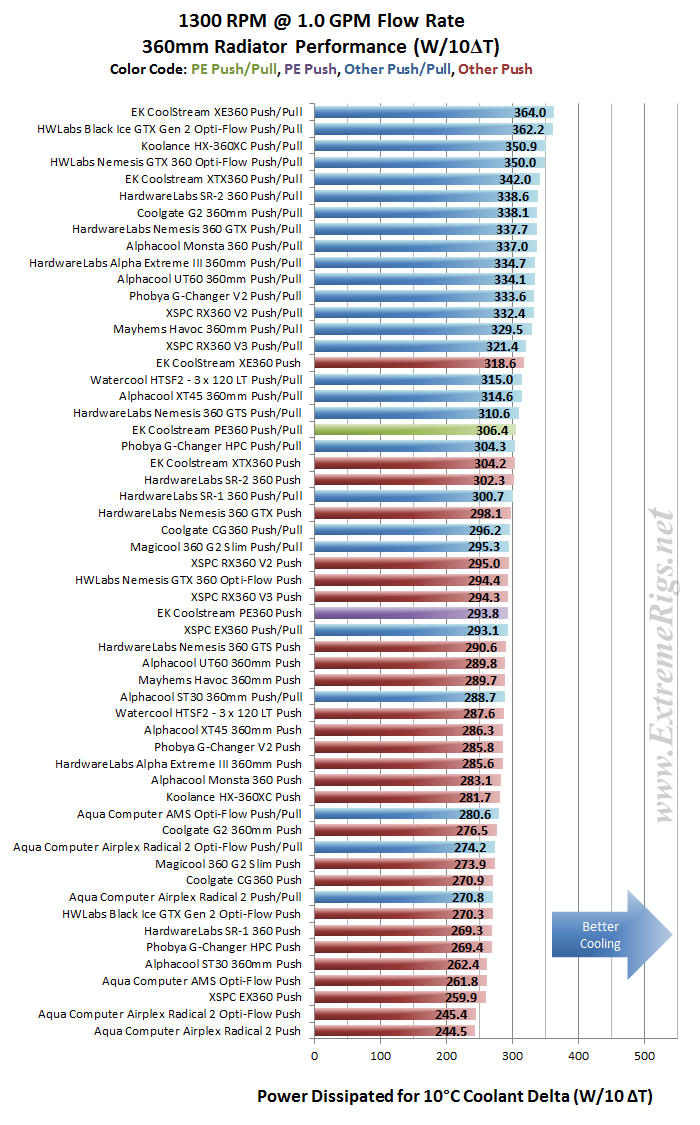
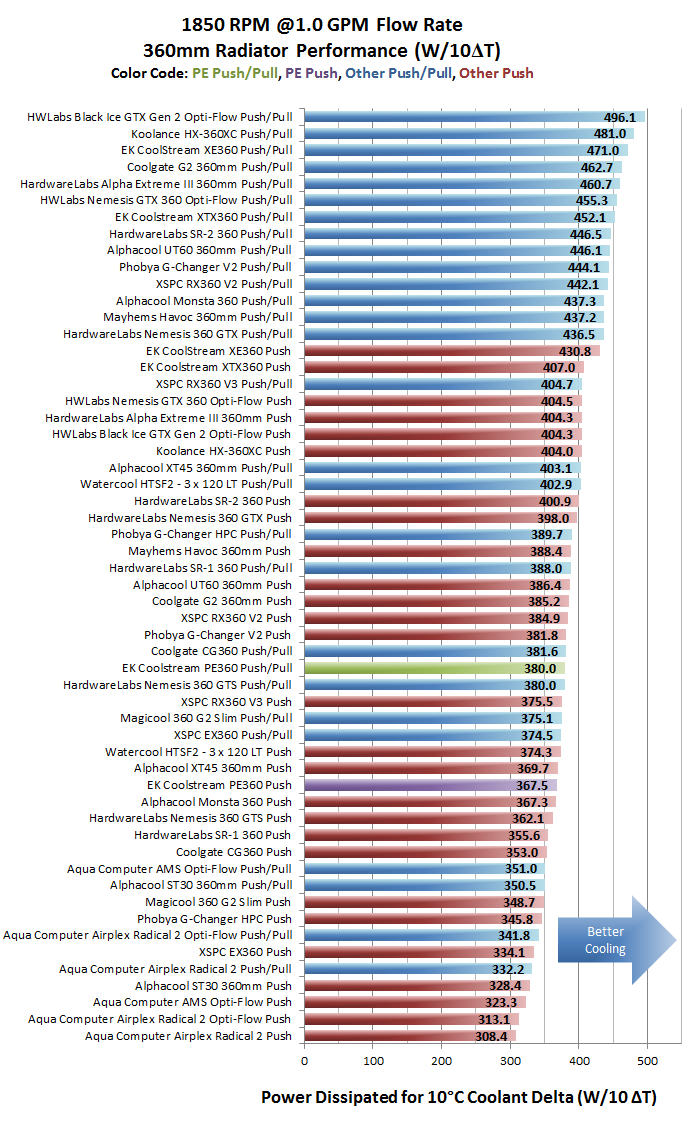
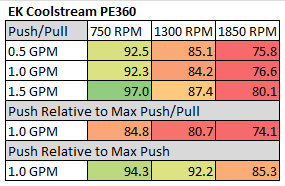
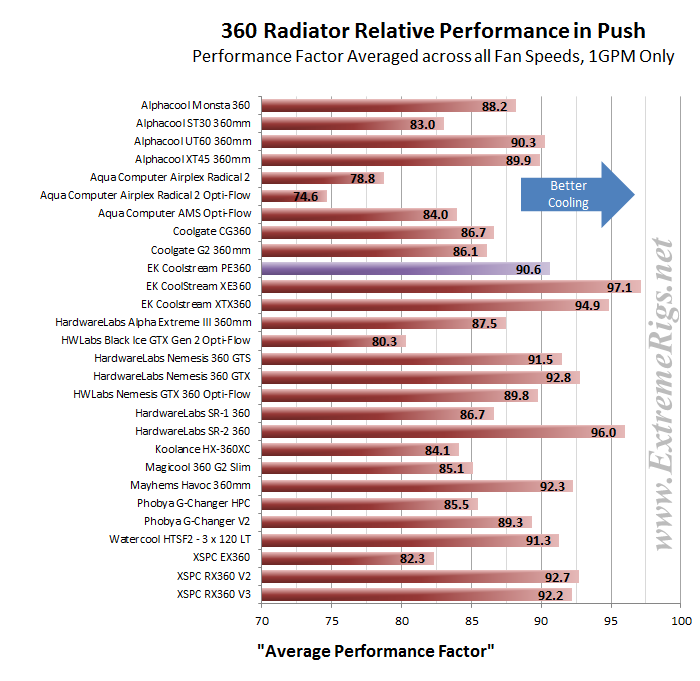
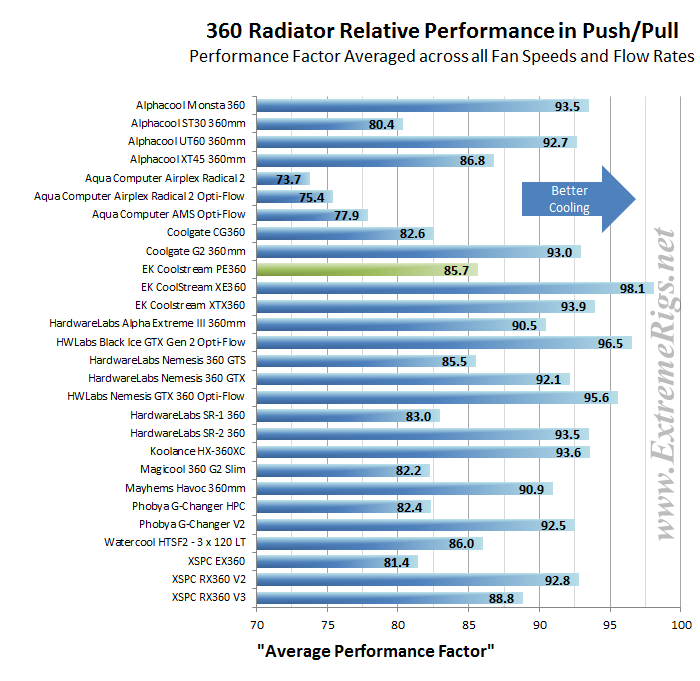




[…] UT60 360 Radiator Alphacool XT45 360 Radiator Coolgate G2 360 Radiator EK PE 360 Radiator Hardware Labs Alpha Extreme III 360 Radiator Hardware Labs Nemesis GTS 360 Radiator Hardware Labs […]
[…] MX block which performed very well in our testing and added a modified version of their PE radiator with a low power DDC pump attached. EK’s excellent compression fittings and ZMT tube is […]
Comments are closed.